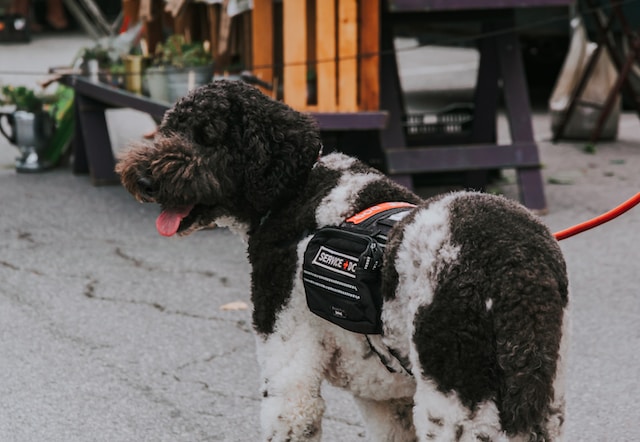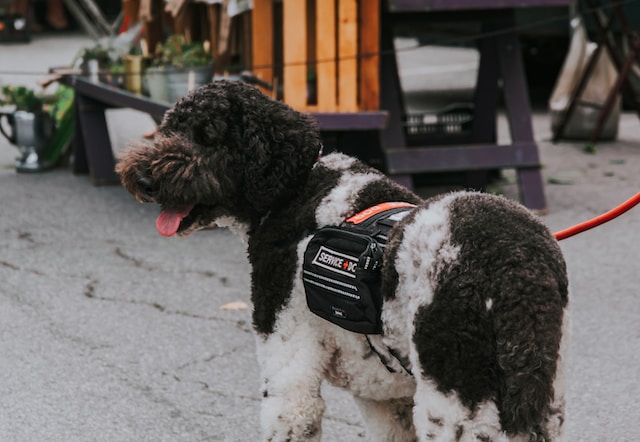
Service dogs play a vital role in assisting individuals with disabilities, providing them with increased independence and support. Unfortunately, the rise of fraudulent service dogs has become a growing concern. People misrepresenting their pets as service dogs not only diminish the credibility of genuine service animals but also pose significant challenges for those who rely on them.
To preserve the integrity of service dogs and protect the rights of individuals with disabilities, it is essential to understand how to distinguish a fake service dog from a real one. Here are some key factors to consider.
Understanding the Law
The first step in recognizing a fraudulent service dog is to understand the laws governing service animals. In many countries, including the United States, service dogs are protected by legislation, such as the Americans with Disabilities Act (ADA).
These laws define a service animal as one that is specifically trained to perform tasks directly related to a person’s disability. Emotional support animals, therapy animals, and pets do not qualify as service dogs. Familiarize yourself with the legal requirements to differentiate between genuine service animals and impostors.
Behavior and Training
Authentic service dogs undergo extensive training to perform specific tasks that mitigate their owner’s disabilities. They exhibit impeccable behavior in public spaces, remaining calm and focused on their tasks. They are well-behaved, obedient, and trained to ignore distractions.
Fake service dogs, on the other hand, may exhibit unruly behavior, barking, jumping, or showing signs of aggression. Be sure to look for signs of inadequate training or behavior that is not consistent with a highly trained service animal.
Identification and Documentation
Real service dogs often wear a specific harness, vest, or other identifiable gear that signifies their role. However, it is important to note that while these indicators are common, they are not legally required in many jurisdictions.
Nevertheless, legitimate service dog owners may carry identification cards or documentation that verifies their dog’s training and status. These documents are not legally mandated but can be helpful in establishing credibility. Fraudulent service dog owners may lack any form of identification or refuse to provide documentation upon request.
Task Performance
Service dogs are trained to perform specific tasks that assist individuals with disabilities. These tasks can range from guiding the visually impaired, alerting to seizures, retrieving medication, or providing mobility support.
Genuine service dogs demonstrate their abilities and perform their tasks reliably and without causing disruption or inconvenience to others. Fraudulent service dogs are unlikely to be capable of performing the complex tasks expected of a legitimate service animal.
Health and Hygiene
Service dogs are required to be in good health, clean, and well-groomed. They receive regular veterinary care, including vaccinations, to ensure they do not pose any health risks to the public. Fraudulent service dogs may exhibit signs of poor health, such as being underweight or unkept.
Conclusion
Distinguishing a fraudulent service dog from a real one is crucial to protect the rights of individuals with disabilities and maintain the integrity of service animals. By understanding the legal framework and observing behavior and training, we can tell the difference between a fake versus properly trained service dog.
Do you own an assistance animal? Register your pet today.
The Service Animal Registry of California invites you to have your assistance animal registered in order to designate its status. We also encourage you to take our online classes so you can be fully aware of your rights and gain more knowledge about your support animal.
Finally, we present to you our book entitled, “ASSISTANCE ANIMAL LAWS: LEARN YOUR RIGHTS REGARDING SERVICE ANIMALS, EMOTIONAL SUPPORT ANIMALS, THERAPY PETS, AND OTHER DOGS, CATS, AND ASSISTANCE ANIMALS” to provide you with a complete education on assistance animals.
Purchase your copy of the book by clicking the image below.














